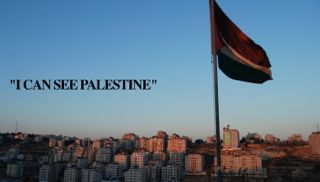This paper examines, through political ethnography, current developments in forms of surveillance and use of power by Israel at the checkpoints in the Palestinian Occupied Territories. These new forms highlight unique and complex trends that have both theoretical and practical implications on issues of power and resistance.
New forms of surveillance have been implemented by the modern state, forms that are usually accepted by the public as more legitimate and effective than the traditional forms of surveillance. The Foucauldian panopticon is such a legitimate space; the architecture shapes the individual’s behavior without any use of explicit violence. Not all modern spaces, however, have been experiencing this shift in forms of surveillance. Outside of the democratic and legitimate state, as well as in some border-areas, the use of power has rarely been challenged and, thus, extreme use of power and surveillance remain the common forms of control. The checkpoints inside the Occupied Territories are an example of spaces that continue to be managed according to the pre-panoptic perceptions and rules. Two characteristics classify these checkpoints as pre-panoptic structures. First, the nature of the power deployed; in contrast to panoptic structures, the control at the checkpoints is attained and maintained by the use of violent physical force: weapons, barriers, and the confiscation of property. Second, there is no place for an outside gaze; the explicit use of force defines the checkpoints as a separate military space. The responsibility for operating the checkpoints remains in hands of military forces and any civilian gaze is restricted.
During the last two years, however, some of the checkpoints have been converted into ‘terminals’. This change, although mainly semantic, has some theoretical and practical implications. The architectural changes are meant to give the impression that the new ‘terminals’ are being activated without use of extreme force or surveillance but only through the exercise of rules and law-abiding. Qalandia checkpoint, three kilometers south of Ramallah, is an example of such a space. Since early 2006, the ‘terminal’ is managed as if it was a regular international point for border-crossing. Beside the Palestinian who is being checked at a given moment, no one can see the power and surveillance that is being used; new buildings allow the examination of only one Palestinian at a time and, thus, prevent an outside gaze by other Palestinians waiting on line or by human rights activists. The difficulty to see or talk with the soldiers is emphasized by random signs that direct and re-direct the Palestinians in line, every few minutes, to different empty work-stations with the excuse that security concerns impose that the Palestinians be ignorant regarding the exact location of the soldiers.
What are the political and human-rights implications of these changes? Do they point to an Israeli attempt to base its control on panoptic structures in which people regulate themselves? I argue that the move from pre-panoptic forms of surveillance to panoptic forms is a cosmetic change directed at the international public opinion, and does not reduce the oppression and domination experienced by the Palestinians in the checkpoints. Moreover, concealing the use of power and surveillance makes it more difficult to resist the Occupation and the existence of the checkpoints, both for Palestinians and for human rights movements. This difficulty not only facilitates the continuing oppression, but also hides it and, thus, enables its radicalization.
| Attachment | Size |
|---|---|
| Click to download the full paper | 98.87 KB |
New School for Social Research - August 28, 2008 - Back to Resources Page
Did we miss something?
Click here to suggest a state building resource to be added to our fast-growing archive!
















